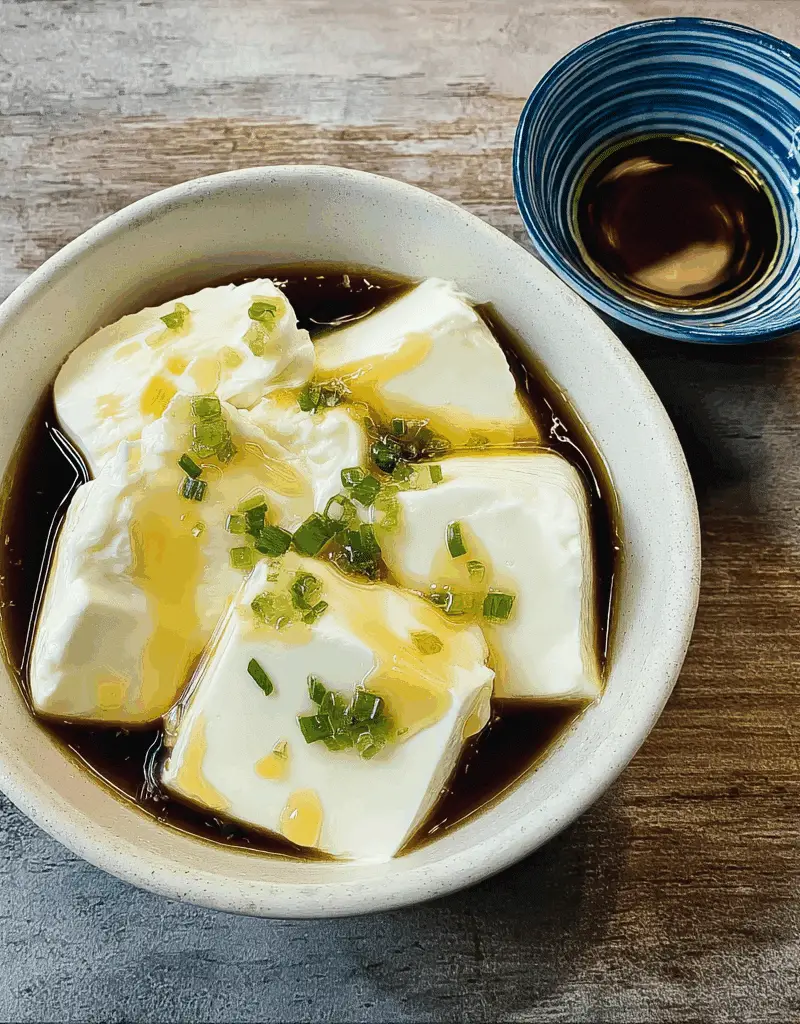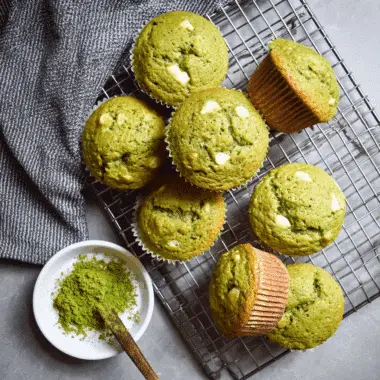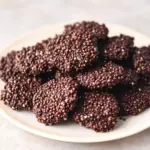The Vietnamese tofu pudding, known locally as Tào Phớ or Douhua in Chinese, is a delicately smooth dessert that delivers gentle sweetness with aromatic ginger syrup. It’s incredibly light, often served chilled, and enjoyed throughout Southeast Asia as a street food treat or comforting home snack.
Silken tofu provides a melt-in-the-mouth texture, while the ginger syrup brings warmth and fragrance that balance the coolness of the dish. It’s perfect for those looking for something sweet but not overly rich. Whether you’re familiar with Asian desserts or trying something new, this dish is a gentle introduction to the beauty of minimalist flavors and simple preparation.
Full Recipe
Ingredients:
-
300g silken tofu (soft or silken-style, preferably fresh or homemade)
-
400ml water
-
120g rock sugar or regular white sugar
-
4-6 slices of fresh ginger
-
1–2 pandan leaves (optional, tied in a knot)
-
1/4 teaspoon agar agar powder (or adjust depending on gelling strength)
-
Pinch of salt
Directions:
-
In a saucepan, combine water, sugar, ginger slices, and pandan leaves (if using). Bring to a boil, then simmer for 10–15 minutes until fragrant. Strain and set aside to cool.
-
Meanwhile, dissolve agar agar powder in 150ml water. Heat gently while stirring until fully dissolved. Do not allow to boil vigorously.
-
Gently heat the silken tofu in a separate pan or steamer if it’s cold from refrigeration. Be careful not to break the delicate texture.
-
Pour the agar mixture into the tofu gently, stir lightly to combine without overmixing. Let it cool slightly and set at room temperature.
-
Once set, refrigerate until chilled.
-
Serve the tofu pudding in bowls, topped with ginger syrup.
Prep Time: 10 minutes | Cooking Time: 20 minutes | Total Time: 30 minutes
Kcal: 120 kcal | Servings: 4 servings
Origins and Cultural Significance
Vietnamese tofu pudding, known as Tào Phớ in the North and Tàu Hủ Nước Đường in the South of Vietnam, is a beloved traditional dessert rooted deeply in the culinary history of East and Southeast Asia. It shares ancestry with Chinese Douhua, and similar variations exist in Taiwan, Malaysia, and Singapore. In Vietnam, this dish transcends regions, seasons, and generations, often served by street vendors, especially in the early mornings or during summer afternoons. Though simple in preparation, it is steeped in nostalgia and comfort, making it not only a dessert but a cultural touchstone.
In Vietnamese households, tofu pudding is frequently associated with warmth, family, and childhood memories. It’s one of those dishes that doesn’t need special occasions—its minimalism is what makes it special. Despite its modest ingredients, it carries emotional weight for many, evoking memories of neighborhood street vendors calling out their wares, or lazy Sunday afternoons spent at home.
The Magic of Silken Tofu
The heart of this dish lies in its silken tofu, known for its ultra-soft, custard-like texture. Unlike firm or extra-firm tofu used in savory dishes, silken tofu is incredibly delicate and smooth. It’s usually made fresh and handled gently to preserve its unique consistency. For tofu pudding, the tofu is either made from scratch using soy milk and coagulants or purchased in a pre-made form from Asian markets.
Its mild flavor acts as a blank canvas that readily absorbs and complements the sweet and spicy notes of the ginger syrup. Nutritionally, silken tofu is low in calories, rich in plant-based protein, and a source of essential nutrients such as calcium, iron, and magnesium. It’s also naturally gluten-free and dairy-free, making it an ideal dessert for people with dietary restrictions.
The Importance of Ginger Syrup
The second essential component of this dessert is the ginger syrup. A blend of water, sugar (often rock sugar or palm sugar), and fresh ginger slices, the syrup brings an aromatic warmth that balances the coolness and neutrality of the tofu. Ginger is not just used for its flavor—it carries numerous health benefits, including aiding digestion, reducing inflammation, and boosting the immune system.
In Vietnamese cuisine, ginger syrup is often simmered slowly to extract the full essence of ginger while caramelizing the sugar slightly to create a more complex, amber-colored sweetness. Sometimes pandan leaves are added for an additional floral layer, but this is optional depending on availability and preference.
The contrast between the slightly spicy syrup and the cooling tofu base is what makes the dish so refreshing and dynamic, even though it’s composed of only a few elements. It demonstrates how balance in taste, texture, and temperature can elevate a dish far beyond its apparent simplicity.
Texture and Temperature Play
What makes Vietnamese tofu pudding stand out is the harmony of textures and temperatures. Served chilled or at room temperature, the tofu’s ultra-soft consistency melts in the mouth, while the warm or lukewarm syrup gently cuts through with its sharp gingery notes. This play between soft and syrupy, cool and warm, is what creates the sensory appeal of the dish.
In warmer seasons, the pudding is typically served chilled, offering a cooling, hydrating dessert experience. In colder months or in the early mornings, it can be served warm to offer comfort and warmth. This seasonal adaptability adds to its timeless appeal.
Versatility and Regional Variations
One of the most fascinating aspects of Tào Phớ is how it varies by region and household. In Northern Vietnam, the pudding is often thinner and almost drinkable, served in a bowl with just enough syrup to lightly flavor the tofu. In the South, the dish may be thicker, sometimes flavored with coconut milk, and served with additional toppings like tapioca pearls, mung beans, or shredded coconut.
Other creative variations across Asia include toppings like sweetened red beans, peanuts, sesame seeds, or even jelly. Some modern versions incorporate brown sugar syrup, honey, or flavored syrups such as matcha or coffee. These innovations keep the tradition alive while also introducing it to a wider global audience.
Health Benefits
Despite being a dessert, tofu pudding is relatively healthy and nourishing. It’s free from heavy cream, butter, or refined flour. The base ingredient—soybeans—is a great source of complete protein, which is particularly beneficial for those following a vegetarian or vegan lifestyle. Silken tofu is also low in saturated fats and cholesterol-free.
Ginger, meanwhile, adds a medicinal quality to the dessert. Known for centuries in traditional medicine, ginger supports digestion, helps fight colds, and contains anti-inflammatory compounds. When combined with the light sweetness of rock sugar, the syrup offers a healing balance that’s both soothing and energizing.
As such, this dish is often recommended not just as a treat, but as a gentle option for those recovering from illness or in need of light nourishment.
Ease of Preparation
One of the reasons this dessert remains a staple in so many homes is because of its simplicity and accessibility. It requires very few ingredients, most of which can be found in any Asian grocery store or even mainstream supermarkets with an international section.
Even making fresh tofu from scratch has become easier with modern tools and available kits. However, most home cooks prefer to use pre-made silken tofu, especially when short on time. The syrup takes just minutes to prepare and can be made in advance and stored in the refrigerator for future servings.
Whether you’re a seasoned cook or a beginner in Asian cuisine, this dish is forgiving and doesn’t require advanced techniques. It’s also easily scalable for larger gatherings or smaller single portions.
Serving Suggestions
Vietnamese tofu pudding is most commonly served in small bowls or dessert cups, allowing for individual portions that highlight its delicate aesthetic. Traditional street vendors often serve it with a ladle, scooping ultra-thin tofu layers into a bowl and topping it with warm syrup.
For a more contemporary presentation, some serve it layered with toppings or poured into glass jars to show off its silky texture. Garnishes like a sprig of mint, toasted sesame seeds, or thin slices of fresh ginger can elevate its visual appeal.
For those hosting a dinner party or brunch, this dessert works beautifully as a light ending to a rich meal, offering guests something unique and culturally immersive without being overwhelming or overly sweet.
Conclusion
Vietnamese tofu pudding, or Tào Phớ, is a testament to the beauty of simplicity in food. With just a handful of ingredients—silken tofu, ginger, sugar, and water—it creates a dessert that is not only comforting but deeply cultural and nostalgic. Its velvety texture, paired with aromatic syrup, showcases the elegance of minimalism in Southeast Asian cooking.
Whether enjoyed on a hot summer day, served warm during a cozy breakfast, or adapted with modern toppings for a unique spin, this dish remains timeless. It reminds us that desserts don’t need to be complicated to be memorable. They just need heart, history, and a touch of sweetness.
For anyone looking to explore Asian desserts, embrace lighter treats, or reconnect with childhood comfort foods, tofu pudding offers a delicious, healthy, and culturally rich experience worth savoring.








